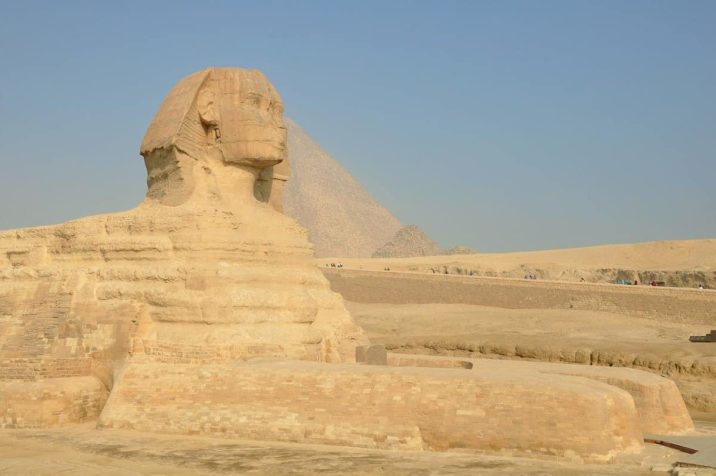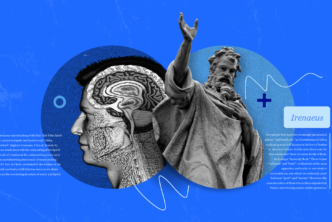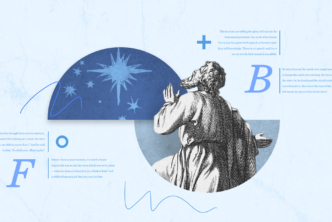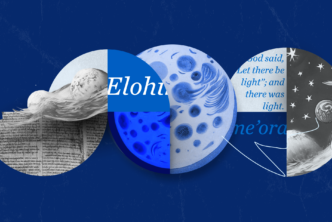Prophetic practices in the Hebrew Bible find parallels in the ANE literature. These parallels are useful for the biblical interpreter, but before jumping into various texts one must ask the essential question: what is prophecy?
Defining Prophecy
When looking at the broader contemporary ANE culture it is clear that prophecy is not restricted to Israel and the Bible, but it depends on how we define the practice. Huffmon sums up the overall situation when he states:
The texts so described involve predictions, or apparent predictions, eschatology or apocalyptic, social or religious criticism, and commissioned messages from deities. The roles include those of ordinary priests (Egypt), technical diviners (Western Asia), and those who speak directly under orders from a deity. The comparative discussion of prophecy is guided by whichever particular definition of prophecy is used. For some, the prophet is the critic of society; for others, the prophet is the announcer of the future; for yet others, the prophet is the charismatically authorized messenger. Although necessarily referring to materials reflecting this wider range of definitions, this entry focuses on prophecy understood as inspired speech at the initiative of a divine power, speech which is clear in itself and commonly directed to a third party.1
Canaanite Ecstacy
Huffmon gives examples of prophecy in the ANE environment, including the account of a prophetic experience that happened to the servant of an Egyptian prince.2 The account states: “‘NOW WHILE HE WAS MAKING OFFERING to his gods, the god seized one of his youths and made him possessed. And he said to him: ‘Bring up [the] god! Bring the messenger who is carrying him! (40) Amon is the one who sent him out! He is the one who made him come!’”3 This is an excellent example of Canaanite prophecy, which is similar in form to certain prophecies in the Hebrew Bible, including ecstatic experiences exhibited by biblical prophets, such as in 1 Sam 10:10-11.4
The Mari Letters
Examples from Mesopotamia are also noteworthy. The “Mari Letters” are a collection of documents from the city of Mari, which was located in the middle section of the Euphrates River.5 These letters consist of numerous references to prophets and prophecy. The collection is quite diverse and includes prophecies from over a dozen deities, as well as eighteen named prophets.6 An example from Mari of something similar to ecstatic forms of biblical prophecy is seen in the following Mari letter. The letter states:
Thus Shibtu your maid-servant. The palace is safe and sound. (5) In the temple of Annunitum, on the third day (of the month), Shelebum went into a trance. Thus (spoke) Annunitum: “O Zimri-Lim, with a revolt (10) they would put you to the test. Guard yourself. At your side put servants, your controllers whom you love. (16) Station them so they can guard you. Do not go about by yourself. (20) And as for the men who would put you [to the test], I shall deliver [th]ese m[en] into your hand.” Now I have hereby dispatched to my lord the ha[ir and fringe] (25) of the cu[lt-player].7
This example is very similar to the previous Egyptian–Phoenician example with the significant difference that the ecstatic experience occurred within the confines of a temple. Paul L. Redditt points out that in contrast to the previous example: “Most texts from Mari dealing with prophets, however, report on the divination of the answer of a god to someone’s question brought by the prophet to that deity. Indeed, divination was widespread, though not always associated with prophets.”8 This is contrasted with the Hebrew Bible where the vast majority of divination is roundly condemned (Deut. 18:10–11) with the notable exception of lot casting.9 Phelps clearly lays out the evidence concerning divination and lot casting when he states:
Cleromancy
The prime exception is the practice of cleromancy (lot casting), which is an integral activity of the high priest (Num. 27:21). Precisely what the Urim and Thummin of the high priest looked like is not clear, but the function of the objects provided a “yes” or “no” answer (cf. 2 Sam. 5:19). Lots determined the division of the land (e.g., Num. 26:55–56), divine approval of candidates for office (e.g., king, 1 Sam. 10:20–21; priest, 1 Chr. 24:5), and guilt (Num. 5:15–30; Josh. 7:14–15).10
Dreams
Another prophetic practice that the ancient Israelites had in common with the ANE contemporaries was the receiving of divine revelation through dreams. An example of this practice can been in an account where a dream instructed Thutmose IV to clear the sand away from the Sphinx.11 Although probably a piece of propaganda on the part of Thutmose IV meant to justify his rise to the throne, it is a remarkable example of the power of prophetic practices in the ANE and the influence they held among the people of that day.12
Conclusion
There is clearly an overlap in biblical prophetic practices with other ANE cultures. The general methods ANE prophets used will not be helpful in differentiating Hebrew prophecy from contemporary ANE parallels with the exception of explicitly condemned practices such as divination.
Editor’s Note: There are so many other examples available, but the purpose of this short article is to stimulate your own curiosity about the parallels between ANE and Hebrew Bible prophetic practices. I hope this informs your interpretive work going forward, and leads you to investigate further the many excellent resources available to engage in deeper research into the topic, many of which are found in Logos’s immense digital library. The following bibliography provided by the author is a good starting point.
Bibliography
“Akkadian Letters.” In The Ancient Near Eastern Texts Relating to the Old Testament, edited by James Bennett Pritchard, translated by S.J. William L. Moran, 623-32, 3rd ed. Princeton: Princeton University Press, 1969.
“A Divine Oracle through a Dream.” In The Ancient Near Eastern Texts Relating to the Old Testament, edited by James Bennett Pritchard, translated by John A. Wilson, 449-50, 3rd ed. Princeton: Princeton University Press, 1969.
“Divine Revelations: Appendix.” In The Ancient Near Eastern Texts Relating to the Old Testament, edited by James Bennett Pritchard, translated by S.J. William L. Moran, 629-32, 3rd ed. Princeton: Princeton University Press, 1969.
“The Journey of Wen-Amon to Phoenicia.” In The Ancient Near Eastern Texts Relating to the Old Testament, edited by James Bennett Pritchard, translated by John A. Wilson, 25-29, 3rd ed. Princeton: Princeton University Press, 1969.
“The Report of Wenamun.” In Ancient Egyptian Literature: Volume II: The New Kingdom, edited by Miriam Lichtheim, translated by P. Moscow, 224-29. Berkeley: University of California Press, 1973.
Clayton, Peter. Chronicle of the Pharaohs. Thames & Hudson Ltd, 1994.
Huffmon, H. B. “Prophecy: Ancient Near Eastern Prophecy.” In Anchor Yale Bible Dictionary, edited by David Noel Freedman, 477-82, vol. 5. New York, NY: Doubleday, 1992.
Koehler, Ludwig, and Walter Baumgartner. The Hebrew and Aramaic Lexicon of the Old Testament. Edited by Walter Baumgartner and Johann Jakob Stamm. Translated by M.E.J. Richardson. Leiden, Netherlands: E.J. Brill, 1994-2000.
Kuemmerlin-McLean, Joanne K. “Magic: Old Testament.” In Anchor Yale Bible Dictionary, edited by David Noel Freedman, 468-71, vol. 4. New York, NY: Doubleday, 1992.
McCarter Jr., P. Kyle I Samuel: A New Translation with Introduction, Notes and Commentary. Anchor Yale Bible, edited by William Foxwell Albright and David Noel Freedman, vol. 8. New York, NY: Doubleday, 1980.
Phelps, Mark Anthony. “Divination.” In Eerdmans Dictionary of the Bible, edited by Allen C. Myers David Noel Freedman, and Astrid B. Beck, 349-51. Grand Rapids, MI: W.B. Eerdmans, 2000.
Redditt, Paul L. Introduction to the Prophets. Grand Rapids, MI: William B. Eerdmans Publishing Company, 2008.
- H. B. Huffmon, “Prophecy: Ancient Near Eastern Prophecy,” in Anchor Yale Bible Dictionary, ed. David Noel Freedman, vol. 5. (New York, NY: Doubleday, 1992), 477-82.
- Huffmon, 477.
- ANET 26. For a different translation see. AEL 2:225.
- P. Kyle McCarter Jr., I Samuel: A New Translation with Introduction, Notes and Commentary, Anchor Yale Bible, ed. William Foxwell Albright and David Noel Freedman, vol. 8 (New York, NY: Doubleday, 1980), 187.
- This translated collection of the letters will be used in this study when referencing specific “Mari” letters. ANET 623-32.
- Huffmon, 478-80.
- ANET 630.
- Paul L. Redditt, Introduction to the Prophets (Grand Rapids, MI: William B. Eerdmans Publishing Company, 2008), 2.
- Joanne K. Kuemmerlin-McLean, “Magic: Old Testament,” in Anchor Yale Bible Dictionary, ed. David Noel Freedman, vol. 4. (New York, NY: Doubleday, 1992), 469-70.
- Mark Anthony Phelps, “Divination,” in Eerdmans Dictionary of the Bible, ed. Allen C. Myers David Noel Freedman, and Astrid B. Beck (Grand Rapids, MI: W.B. Eerdmans, 2000), 350.
- ANET 449.
- Peter Clayton, Chronicle of the Pharaohs, Thames & Hudson Ltd, 1994. pp.113-114





